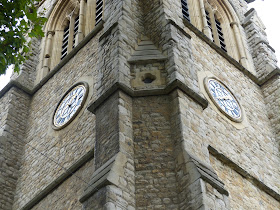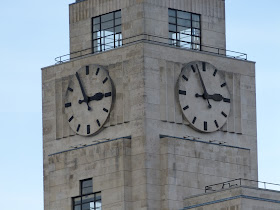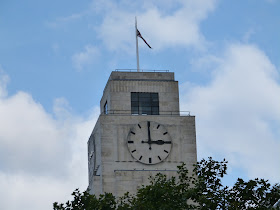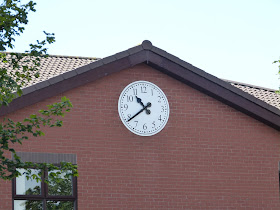My visits this year were not picked for their clock interest, so I have included some clocks seen along the way as well as ones at the specific locations.
The first is a glimpse of Holy Trinity on Marylebone Road, a John Soane church of 1828.
The next exhibit is from a tour of Piccadilly station. There are several ordinary clocks around the ticket hall concourse, and then there is this oddity.
This shows the time anywhere in the world, with the focus of course on London, including the hour's difference during British Summer time.
The clock is still functioning mechanically, but no longer keeps good time. But as everyone passing seems to ignore it, perhaps this doesn't really matter.
Piccadilly Circus station was opened in 1906, but the clock dates from when the below surface booking office was completed in 1928.
The next clock is also from an Open House visit, and would not normally be accessible to the general public. But once year I allow them to be included in this blog. The clock in question is in one of the meeting rooms in the Royal College of General Practitioners on Euston Square.
Next is a clock of which I am familiar, but not from this vantage point.
And now another new church to me. This is St Barnabas, just off Pimlico Road. This church dates from 1850.
Now make a note that next year's London Open House event is on 22 / 23 September 2018.


































































